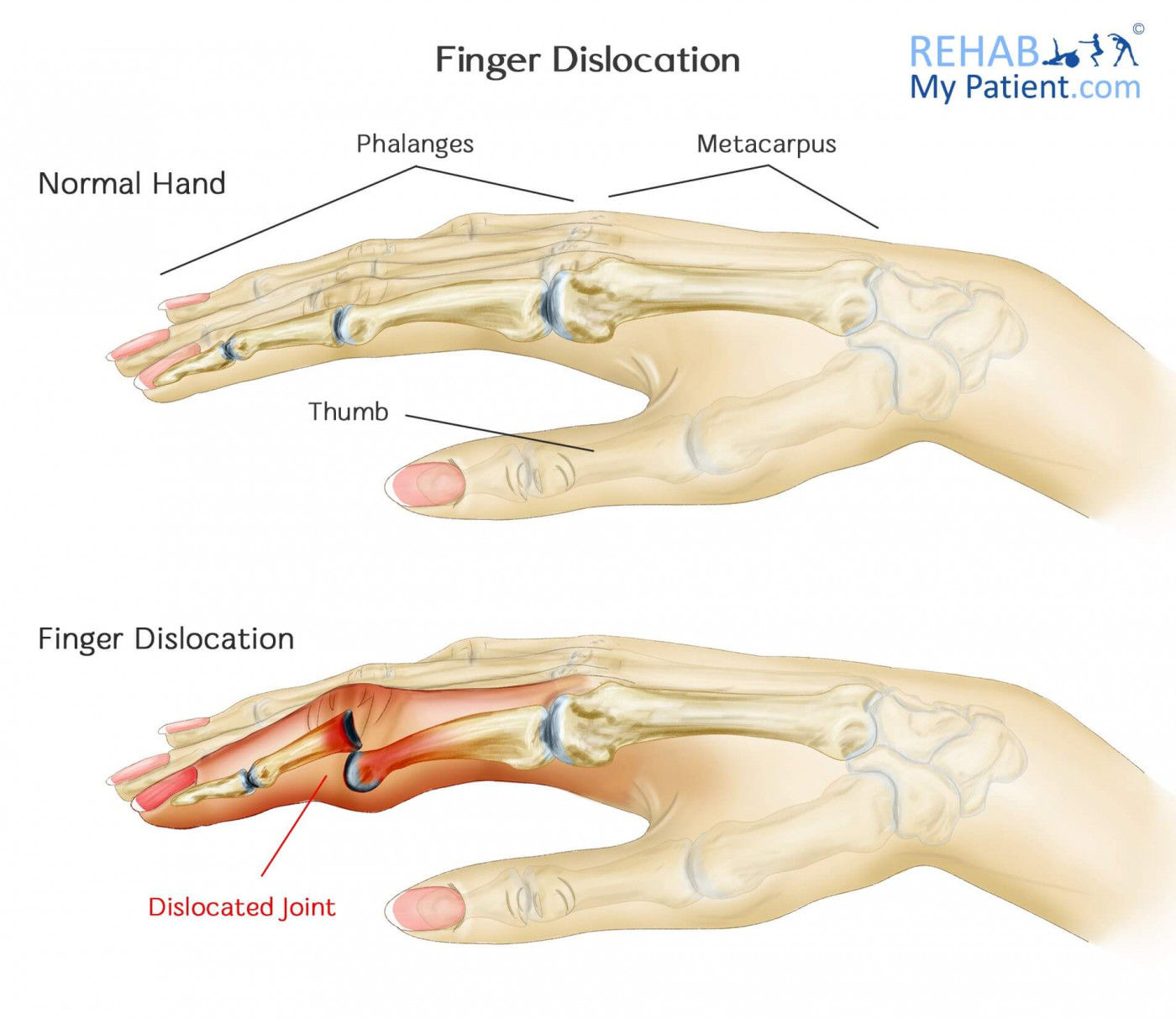
An individual who has a finger dislocation has an abnormal alignment of the bones within the finger. Whenever an injury causes tearing around the joint ligaments, the bones can end up separating, which results in abnormal alignment. In instances of a finger dislocation, the digit will be deformed, swollen and painful. Participating in sports is considered to be the most common reason why the finger dislocation occurs in the first place. High trauma sports such as rugby and American Football are common causes, as well as sports that involve catching high speed balls such as cricket.
Finger Dislocation Anatomy
All of the fingers have three distinct bones in them, while the thumb only has two bones. At each one of the joints, the bones are held into place with ligaments. The main ligament occurring each side of the finger is the collateral ligament. This ligament is usually torn during the dislocation. Muscles within the forearm or hand turn into tendons, which attaches the bones to the finger. It is the muscles that move the fingers by pulling the tendons back. All of the bones are attached to the five metacarpal bones making up the body in the hand.

A patient who dislocated her finger from a fall during roller-skating. The finger relocated straight away but still shows a deformity due to joint swelling and ligament damage.
How to Treat Finger Dislocation:
- Reduction
Throughout the process, the doctor will try some gentle maneuvers to try to help get the finger bone back into its original position. Based upon the amount of swelling and pain there is at the site, you might have to have a general anesthetic or local anesthetic before any manipulation of the bones can occur.
- Immobilization
After the bones are back where they should be, the doctor will immobilize the joint using a sling or splint for multiple weeks. Based upon the nature and the location of the dislocation, the amount of time you wear the splint is going to vary accordingly.
- Pain Medication
After the reduction process is complete, any pain that was severe should begin improving. If the pain continues, you might be prescribed a muscle relaxer or a pain reliever to help get you through the healing process.
- Surgery
If the nerves or the blood vessels are damaged or the dislocated bone cannot be moved back into its correct position, surgery might be the only option for you. For those who have dealt with recurrent dislocations, surgery might be needed to make sure the bones are back where they need to be.
- Rehabilitation
After the sling or splint is removed, you will begin going through a slow rehabilitation program that is designed to restore the range of movement and strength within the affected joint. Rehab is very important as permanent finger stiffness may occur if the joint is not exercised properly. In the early stages you will have a lot of difficulty bending your finger, but with time and persistence the finger usually regains the ability to bend.
Tips:
- If you have any tearing of the ligaments, muscles and tendons, that will delay your rehabilitation which can take 6-12 months to recover.
- If you have blood vessel or nerve damage around the joint your rehabilitation will be delayed further.
- For those who have suffered from repeated dislocations, there is a chance you can reduce or put your own finger back into place relatively easily.
- Developing arthritis in the finger joint is much more likely following dislocation.
- When the tendons or ligaments supporting the injured joint become torn or stretched, or the surrounding blood vessels are damaged, you might have to go through surgery to correct the problem.
Sign Up
Sign up for your free trial now!
Get started with Rehab My Patient today and revolutionize your exercise prescription process for effective rehabilitation.
Start Your 14-Day Free Trial